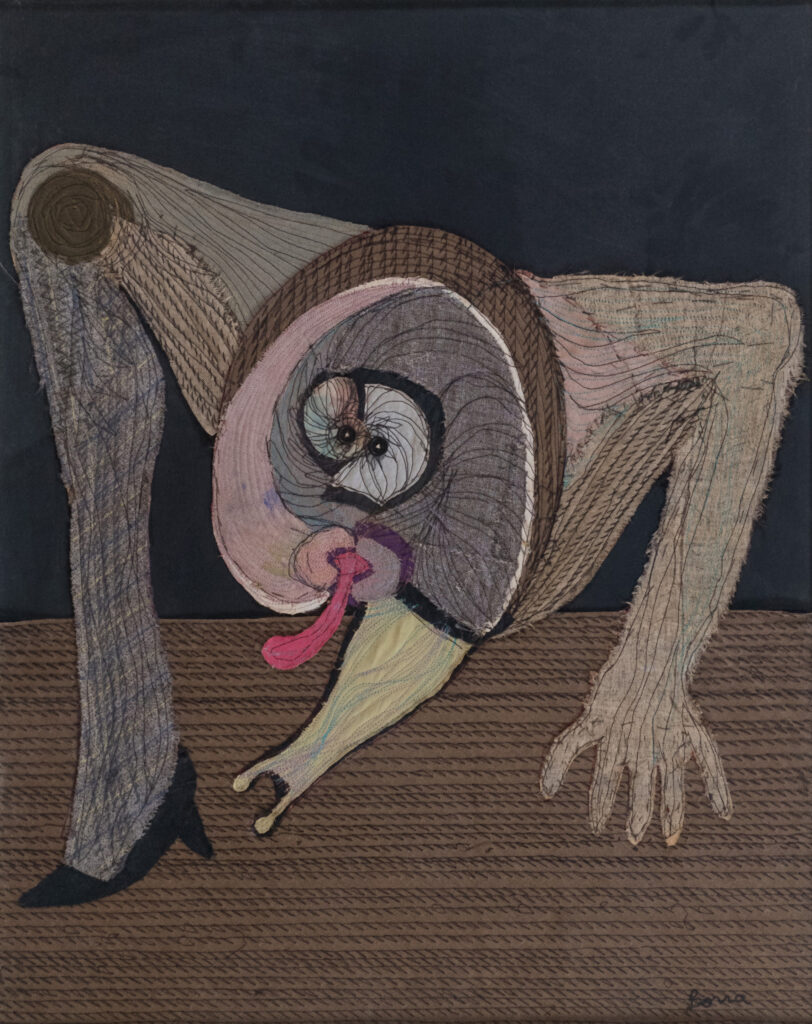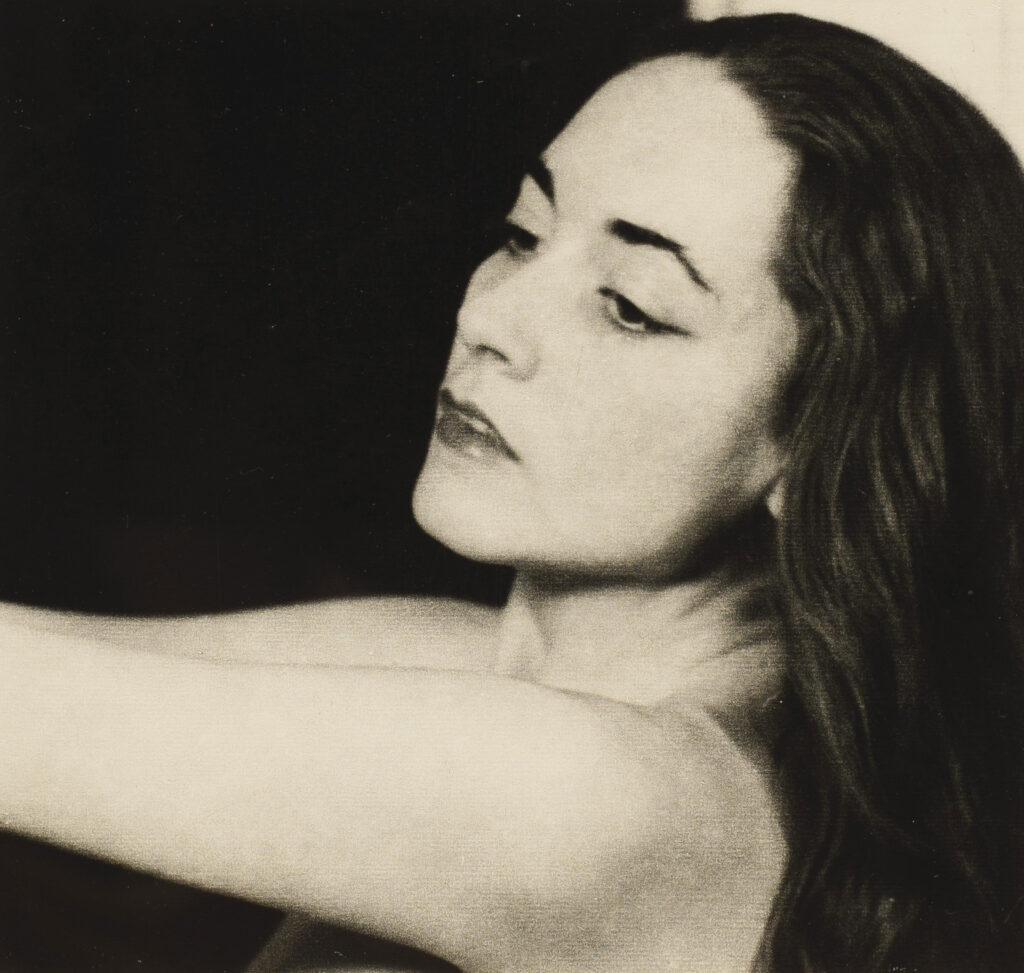Your currently viewing RAW Modern | Switch to RAW Contemporary
La Lubricità, 1970
Catalogue essay by Blanche Llewellyn
Bona de Mandiargues was a Surrealist
After a formative phase stylistically influenced by the example of her uncle, Filippo de Pisis, Bona developed a figurative painting style nourished by collecting numerous aquatic, mineral and plant objects. Out of these interests, she developed an increasing fascination with natural objects which had the power to enchant or disturb – drawing her closer to the mainstream ethos of Surrealism. In 1958, Bona developed a technique that would come to characterize her work in the following years: during a trip to Mexico she discovered, by chance, the suggestive power of the patterned fabrics of the region, which had been used to line her husband’s jackets. Employing a sewing machine for the assembly of different materials, she began producing fabric collages which conveyed a more surrealist edge than the more classic medium of her previous oil paintings.
La Lubricità (which translates as a slippery surface – a title which has obvious sexual connotations), created in 1970, is a collage and fabric sewn on canvas. In this oeuvre, Bona rejected the roles of women-muse and women-child, prevalent in the field of Surrealism, and instead depicted a snail (complete with black high heeled shoe), a hermaphrodite animal and androgynous creature,

